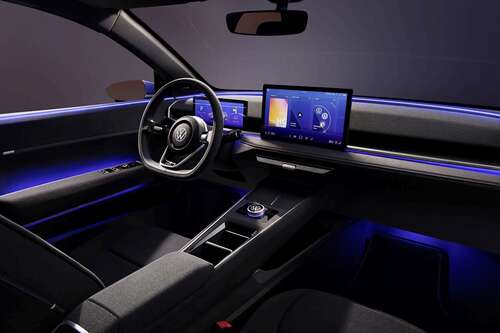A hot potato: Do you yearn for a time when vehicles had more physical buttons in their cabins and fewer touchscreens/touch controls? Drivers in Europe can expect to see a lot more old-school interiors after January 2026, which is when vehicles will be required to come with physical controls for certain functions if they want to earn a five-star safety rating.
Independent vehicle safety organization the European New Car Assessment Programme (Euro NCAP) says it is introducing new guidance at the start of 2026 that will require five important vehicle functions – turn signals, hazard warning lights, windshield wipers, horn, and SOS features – be activated by physical controls if a car wants to earn its five-star safety rating.
“The overuse of touchscreens is an industry-wide problem, with almost every vehicle-maker moving key controls onto central touchscreens, obliging drivers to take their eyes off the road and raising the risk of distraction crashes,” said Matthew Avery, Euro NCAP’s director of strategic development.
“New Euro NCAP tests due in 2026 will encourage manufacturers to use separate, physical controls for basic functions in an intuitive manner, limiting eyes-off-road time and therefore promoting safer driving,” Avery added.
NCAP testing is voluntary – it can’t force automakers to do anything – but many companies use its ratings to promote the safety of their vehicles. One of these is Tesla, which is likely to be most impacted by the changes. Elon Musk’s vehicles removed the stalks that were used for turn signals in favor of haptic buttons on the steering wheels, a decision that many people are unhappy about and some claim was only done to save money, not for customer convenience.
The increasing amount of tech, especially touch screens, appearing in new cars has been a source of controversy for many drivers who complain that it is distracting and more likely to break than traditional physical controls.
In March last year, Sang Yup Lee, Head of Hyundai Design, confirmed that the company was keeping buttons and dials in its vehicles during the launch of the new-generation Hyundai Kona. Lee said the decision was simply a safety issue.
In June, Volkswagen CEO Thomas Schäfer admitted that the addition of touch-sensitive inputs in his brand’s cars, introduced by predecessor Herbert Diess, had caused plenty of frustration among loyal customers. This led to the ID2.all concept electric car featuring several physical buttons placed beneath the touchscreen, something Volkswagen interior designer Darius Watola said would be “a new approach for all models” based on “recent feedback from customers,” especially those in Europe who wanted more physical buttons.


